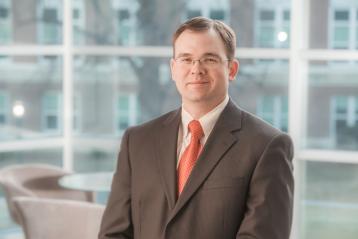
Did you know that stroke is one of the leading causes of death and disability in this country? The truth is, more than 800,000 people have a stroke every year and about 200,000 of these cases are second-time strokes. Prevention is the most effective way to avoid a stroke. However, recognition of the warnings signs and getting to the hospital as fast as possible is the most effective way to prevent disability from a stroke.
Stroke occurs more in women than men.
True: Women over the age of 75 have a higher incidence of a stroke. However, the opposite is true in younger ages where the incidence is higher in men. In the United States, women are nearly twice as likely to die from a stroke or cardiovascular disease than from any type of cancer.
Most strokes cannot be prevented.
False: Eighty percent of ALL strokes can be prevented by modifying 10 primary risk factors. While some risk factors, such as age and genetics, can’t be changed, modifying these 10 controllable risk factors can greatly reduce your risk: high blood pressure, exercise, cholesterol, diet, smoking, atrial fibrillation management, diabetes, obesity, alcohol consumption and stress. Many of these risk factors can be addressed by adopting a healthier lifestyle that includes exercise at least three days per week, and watching what you eat.
Some people will experience warning signs before experiencing a stroke.
True: While the majority of people will have no warning signs before an impending stroke, a small number of people will experience a “mini stroke,” known as a transient ischemic attack (TIA) before they have a full stroke. One in three people who have a TIA will have a full stroke, and half of these will occur within following year. A TIA is a brief reduction of blood flow to the brain that may not cause permanent brain damage, but causes symptoms similar to a stroke.
The symptoms of a stroke typically come on gradually.
False: Stroke symptoms typically come on suddenly. If you suspect someone is having a stroke, call 911 for help right away.
If I am having signs and symptoms of a stroke I can wait until the next day to see my primary care doctor? False: Without rapid diagnosis and treatment, the effects can be disabling and long-lasting. Approximately 2 million of your brain cells die every minute during a stroke. Therefore, recognizing the symptoms and getting medical attention F.A.S.T. can save your life or that of a loved one.
F.A.S.T. is an easy way to remember the sudden signs of a stroke.
Face drooping – Does one side of the face droop or is it numb? Ask the person to smile. Is the person's smile uneven?
Arm weakness – Is one arm weak or numb? Ask the person to raise both arms. Does one arm drift downward?
Speech difficulty – Is speech slurred? Is the person unable to speak or hard to understand? Ask the person to repeat a simple sentence, like "The sky is blue." Is the sentence repeated correctly?
Time to call 911 – If someone shows any of these symptoms, even if the symptoms go away, call 911 and get the person to the hospital immediately. Check the time so you'll know when the first symptoms appeared.
Treatment with IV tissue plasminogen activator (tPA) is time dependent, and is only effective if it is given within the first hours. Eligible patients must be treated within 4 ½ hours from symptom onset to benefit. Best results are achieved in patients treated the earliest. Therefore, it is vital to recognize the symptoms of stroke and call 911 immediately.

Nebraska Medicine – Nebraska Medical Center is the only nationally certified Comprehensive Stroke Center in the region. This certification was received for its excellence in the diagnosis and treatment of strokes, including expertise in the treatment of appropriate patients with tPA.
Furthermore, Nebraska Medical Center is one of a few select centers that has the ability and expertise to offer additional treatment options up to 24 hours after the onset of symptoms. This cutting-edge treatment option is called mechanical thrombectomy and consists of the surgical removal of the clot from the brain via an endovascular catheter. Study results show that this procedure can essentially double the likelihood of a good outcome. Like tPA, the faster a patient gets to the hospital, the better their chances of survival.
Stroke Experts are Here!
Make an appointment with one of our stroke experts. Call us at 800.922.0000


